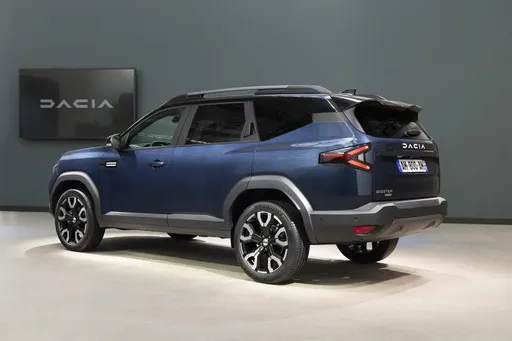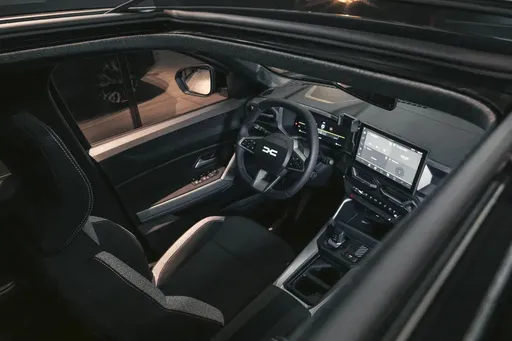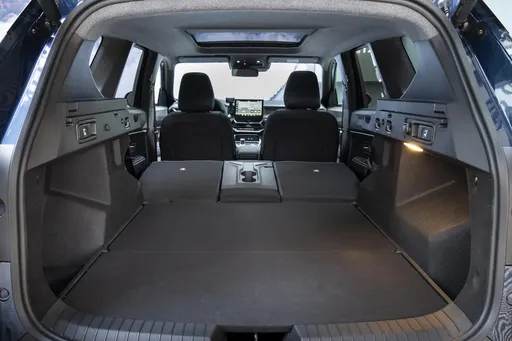Alfa Romeo Junior vs Dacia Bigster – Which car suits you better?
Two cars, one duel: Alfa Romeo Junior meets Dacia Bigster.
Which one wins in performance, efficiency and value for money? Find out now!
Costs and Efficiency:
Looking at overall running costs, both models reveal some interesting differences in everyday economy.
Dacia Bigster has a clearly perceptible advantage in terms of price – it starts at 20600 £, while the Alfa Romeo Junior costs 25700 £. That’s a price difference of around 5109 £.
Fuel consumption also shows a difference: Dacia Bigster manages with 4.70 L and is therefore hardly perceptible more efficient than the Alfa Romeo Junior with 4.80 L. The difference is about 0.10 L per 100 km.
Engine and Performance:
Power, torque and acceleration say a lot about how a car feels on the road. This is where you see which model delivers more driving dynamics.
When it comes to engine power, the Alfa Romeo Junior has a decisively edge – offering 280 HP compared to 155 HP. That’s roughly 125 HP more horsepower.
In acceleration from 0 to 100 km/h, the Alfa Romeo Junior is decisively quicker – completing the sprint in 5.90 s, while the Dacia Bigster takes 9.70 s. That’s about 3.80 s faster.
In terms of top speed, the Alfa Romeo Junior performs to a small extent better – reaching 206 km/h, while the Dacia Bigster tops out at 180 km/h. The difference is around 26 km/h.
There’s also a difference in torque: Alfa Romeo Junior pulls distinct stronger with 345 Nm compared to 230 Nm. That’s about 115 Nm difference.
Space and Everyday Use:
Cabin size, boot volume and payload all play a role in everyday practicality. Here, comfort and flexibility make the difference.
Both vehicles offer seating for 5 people.
In curb weight, Alfa Romeo Junior is slight lighter – 1380 kg compared to 1425 kg. The difference is around 45 kg.
In terms of boot space, the Dacia Bigster offers evident more room – 667 L compared to 415 L. That’s a difference of about 252 L.
In maximum load capacity, the Dacia Bigster performs evident better – up to 1937 L, which is about 657 L more than the Alfa Romeo Junior.
When it comes to payload, Dacia Bigster a bit takes the win – 467 kg compared to 420 kg. That’s a difference of about 47 kg.
Who wins the race?
The Alfa Romeo Junior proves to be won narrowly and therefore becomes our DriveDuel Champion!
Alfa Romeo Junior is the better all-rounder in this comparison.
 @ Alfa Romeo / Stellantis Media
@ Alfa Romeo / Stellantis Media
Alfa Romeo Junior
Alfa Romeo Junior
The Alfa Romeo Junior captures the essence of Italian design with its sleek lines and compact dimensions, making it an icon of elegance and performance. With a spirited driving experience and a charming retro aesthetic, it appeals to enthusiasts and casual drivers alike. This delightful car embodies the brand's rich heritage while remaining a fun and engaging option for those seeking a unique automotive experience.
details @ Alfa Romeo / Stellantis Media
@ Alfa Romeo / Stellantis Media
 @ Alfa Romeo / Stellantis Media
@ Alfa Romeo / Stellantis Media
 @ Alfa Romeo / Stellantis Media
@ Alfa Romeo / Stellantis Media
Dacia Bigster
The Bigster is poised to redefine the SUV segment with its bold design and spacious interior, catering to the needs of both families and adventure seekers alike. Emphasizing sustainability and practicality, this model reflects a modern approach to automotive engineering, making it a compelling choice for environmentally conscious drivers. With its striking presence on the road, the Bigster not only captures attention but also embodies a new era of versatile mobility.
details @ Dacia / Renault Group Media
@ Dacia / Renault Group Media
 @ Dacia / Renault Group Media
@ Dacia / Renault Group Media
 @ Dacia / Renault Group Media
@ Dacia / Renault Group Media
 @ Dacia / Renault Group Media
@ Dacia / Renault Group Media
 @ Dacia / Renault Group Media
@ Dacia / Renault Group Media
 @ Alfa Romeo / Stellantis Media
@ Alfa Romeo / Stellantis Media
|
 @ Dacia / Renault Group Media
@ Dacia / Renault Group Media
|
|
|
|
Costs and Consumption |
|
|---|---|
|
Price
25700 - 41600 £
|
Price
20600 - 26600 £
|
|
Consumption L/100km
4.8 - 5.4 L
|
Consumption L/100km
4.7 - 7.1 L
|
|
Consumption kWh/100km
15.1 - 17.5 kWh
|
Consumption kWh/100km
-
|
|
Electric Range
344 - 410 km
|
Electric Range
-
|
|
Battery Capacity
0.4 - 51 kWh
|
Battery Capacity
-
|
|
co2
0 - 119 g/km
|
co2
106 - 137 g/km
|
|
Fuel tank capacity
44 - 45 L
|
Fuel tank capacity
50 - 55 L
|
Dimensions and Body |
|
|---|---|
|
Body Type
SUV
|
Body Type
SUV
|
|
Seats
5
|
Seats
5
|
|
Doors
5
|
Doors
5
|
|
Curb weight
1380 - 1689 kg
|
Curb weight
1425 - 1547 kg
|
|
Trunk capacity
340 - 415 L
|
Trunk capacity
510 - 667 L
|
|
Length
4173 mm
|
Length
4570 mm
|
|
Width
1781 mm
|
Width
1813 mm
|
|
Height
1505 - 1538 mm
|
Height
1705 mm
|
|
Max trunk capacity
1205 - 1280 L
|
Max trunk capacity
1813 - 1937 L
|
|
Payload
390 - 420 kg
|
Payload
383 - 467 kg
|
Engine and Performance |
|
|---|---|
|
Engine Type
Electric, Petrol MHEV
|
Engine Type
Petrol MHEV, Full Hybrid, LPG
|
|
Transmission
Automatic
|
Transmission
Manuel, Automatic
|
|
Transmission Detail
Dual-Clutch Automatic, Reduction Gearbox
|
Transmission Detail
Manual Gearbox, Automated Manual
|
|
Drive Type
Front-Wheel Drive, All-Wheel Drive
|
Drive Type
All-Wheel Drive, Front-Wheel Drive
|
|
Power HP
136 - 280 HP
|
Power HP
130 - 155 HP
|
|
Acceleration 0-100km/h
5.9 - 9.1 s
|
Acceleration 0-100km/h
9.7 - 11.2 s
|
|
Max Speed
150 - 206 km/h
|
Max Speed
180 km/h
|
|
Torque
230 - 345 Nm
|
Torque
230 Nm
|
|
Number of Cylinders
3
|
Number of Cylinders
3 - 4
|
|
Power kW
100 - 207 kW
|
Power kW
96 - 115 kW
|
|
Engine capacity
1199 cm3
|
Engine capacity
1199 - 1799 cm3
|
General |
|
|---|---|
|
Model Year
2024 - 2025
|
Model Year
2025
|
|
CO2 Efficiency Class
A, C, D
|
CO2 Efficiency Class
E, D, C
|
|
Brand
Alfa Romeo
|
Brand
Dacia
|
What drive types are available for the Alfa Romeo Junior?
Available configurations include Front-Wheel Drive or All-Wheel Drive.
The prices and data displayed are estimates based on German list prices and may vary by country. This information is not legally binding.
